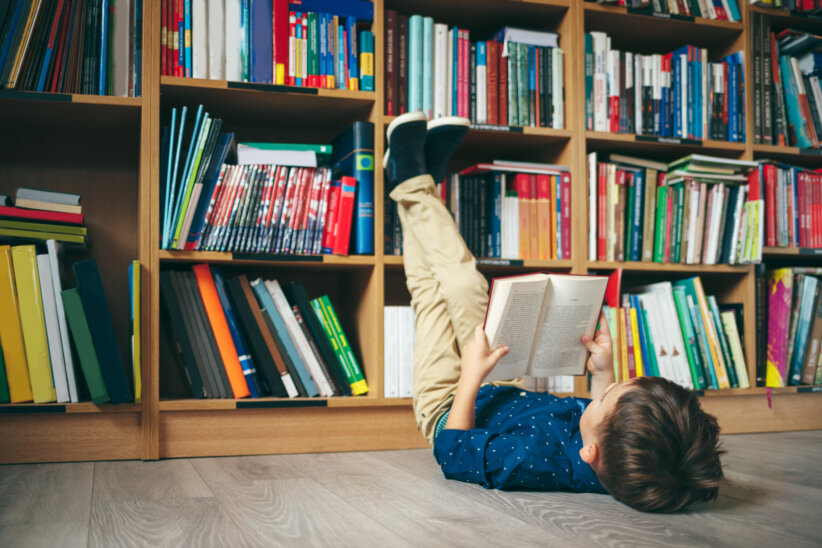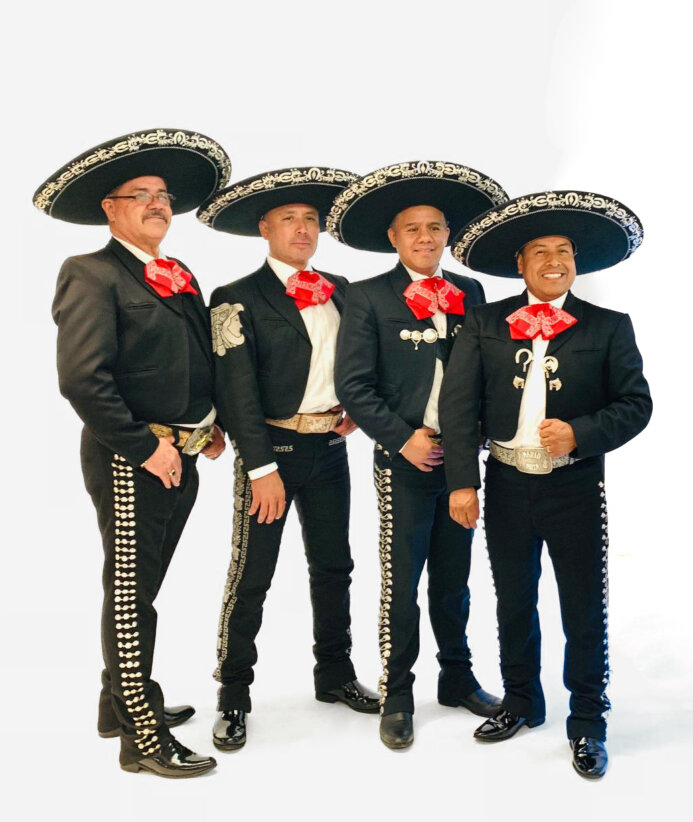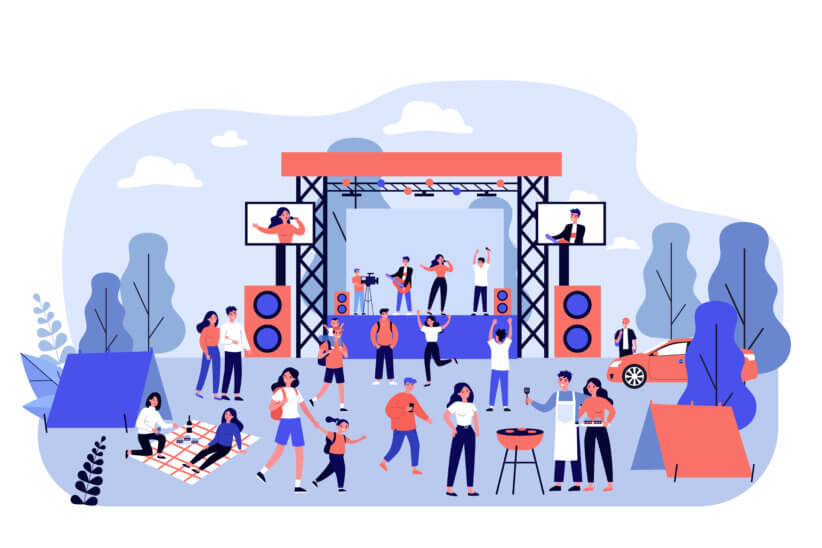Imagine trying to teach a group of 6-year-olds how to play baseball by plopping them at home plate at Yankee Stadium and asking them to hit a 90-mile-an-hour fastball with a major league-sized baseball bat. Or asking a 5-year-old beginner to defend a World Cup-sized soccer goal. Or expecting your kindergartener to shoot free throws into an NBA-regulation 10-foot high basket. Sounds a little silly, right?
Yet for years, kids were taught the sport of tennis with the same balls and courts used by professionals. “We used to just throw them on the court with a yellow ball and a full-sized racquet 20 years ago and say ‘good luck,’” says Simon Gale, general manager at Yonkers Tennis Center. Not only that, but beginning players might take lessons for two or three years before playing an actual game of tennis against an opponent. “That’s a long time for a kid to wait to actually experience what playing a real match is about,” he says.
As more children were playing AYSO or Tee Ball and fewer were sticking with tennis, the United States Tennis Association (USTA) took notice. “As the USTA has looked out over the participation landscape and demographic information behind our sport, we’re recognizing that our player base is aging,” says Executive Director and Chief Operating Officer for USTA Eastern, Jill Fonte. “We have a sport that really started to boom way back in the 70s, but as time has gone on, there have been more options presented to people in terms of how they spend their leisure time.”
In light of the desire to make tennis more accessible to a younger generation, the USTA created the Youth Tennis program (formerly called the 10 and Under Tennis program). “We realized that asking young children to play on a regulation-sized court with a ball that bounces to regulation height and a racquet that is really sized for an adult does not present a particularly compelling picture [of success] for a child,” says Fonte. “What happens is the ball bounces too high, the racquet’s too heavy, the court is too big, and kids just don’t embrace the sport because it’s too hard for them to play.”
A New Way to Think About Kids and Tennis
“The [Youth Tennis] program is correct-sized racquets, correct-bouncing balls and different sized courts for the different age groups,” says Geoffrey Jagdfeld, director of tennis for Solaris Sportsclub in Yorktown Heights and president of the United States Professional Tennis Association (USPTA)-Southern District. “The big change for the kids is … they can start to rally and play back and forth with a kid of the same age much earlier than they ever used to before.”
There are four levels in the Youth Tennis program. The youngest players play on a 36-foot court with a red ball that is 75 percent less compressed than a regular tennis ball. When children have mastered that level, they move up and play on a 60-foot court with an orange ball, which is 50 percent less compressed than a regular ball. From there they move to the full-sized court with a green ball, which is 25 percent less compressed than normal, before finally graduating to regulation-sized equipment. The nets and racquets start smaller with the red ball group and gradually increase in size as well. “It basically enables them to play real tennis on a court that’s the right size for them and they can actually get to a ball instead of the ball bouncing over their head trying to reach it,” says Gale. “[Younger children] can’t physically cover an adult-sized court. Now, rather than one shot and the rally’s done, you see these little kids actually rallying and playing tennis with good technique.”
And good technique is important, because it was widely known that the former way of teaching children how to play tennis was, in some ways, instilling poor habits. “In actuality, a person the size of a child cannot use proper technique if the ball is always bouncing over his head,” explains Elliott Pettit, the 10 and Under Lead of Programs and Camps at the USTA Billie Jean King National Tennis Center. “Traditionally, tennis was taught where kids are in a line and the pro feeds the ball directly to them … But in reality, if you do things that way, you’re not really training tennis players because the ball never goes right to you [in a match].”
Another benefit is that the ratio of students to coaches has decreased. “We take five kids on a court at a time,” says Gale. “Some places will take six, some play eight. We try and work five with a pro.” Some younger classes will be a little larger, including the popular “Mommy and Me” classes for kids ages 3 and 4 (and their parents), which can have as many as eight children per instructor.
As for what makes a good Youth Tennis program instructor, Pettit says the most important attribute is enthusiasm. “The coach has to want to be there … Anyone that likes working with a 10 and under group is generally very high energy, very welcoming, very kind, and really sets out to make a connection,” he says. “Essentially, we are teaching tennis, but we’re teaching children first.”
“Until you get the kids wanting to be on the court with you because of who you are, it doesn’t matter how much you know,” agrees Gale. “They’re not going to buy into it until they love being on the court with you.”
Not What Parents Expected
Not everyone in the tennis world bought into the new program when it was first introduced. “At first a lot of parents were resistant to it,” says Fonte. “They said that’s not really tennis, or that’s baby tennis. They had any number of negative comments to make about it.”
“We already had a successful junior program, but I felt very passionate that this was the right teaching methodology for kids,” adds Gale. “We lost some kids because of it; they went elsewhere because the parents didn’t believe in it. But we get no issues from parents now.”
“Once they see their kid out there rallying the ball back and forth with somebody else, it’s a done deal,” agrees Jagdfeld.
Shari Wels’ two boys, Jordan, 12 and Dylan, 9, have been learning and playing at Yonkers Tennis Center under the new system for the past three years. Both Shari and her husband have played the game, learning under the old system, so they were naturally skeptical when introduced to the smaller courts and different-colored balls. “At first you think, is that really the right way for them to learn?” she says. “But then you realize when they’re so small … this is a much better way to learn.” Dylan, in particular, preferred the new system after having taken lessons under the old system at another club. “He loves to play the game,” says Wels. “That’s more exciting to him than just having coaches feeding balls and hitting them back and forth.”
Spreading the Program
The USTA believes that if more kids got the chance to just play the game of tennis, the sport would gain a foothold with the next generation of athletes. To that end, they are doing all they can to ensure the Youth Tennis program spreads far and wide. “We support it in a variety of ways,” says Fonte. “We make the age-appropriate equipment available in schools. We make it available to parks and to programs that might want to get something started but might not be able to afford a whole set of equipment for the kids. We facilitate it in terms of training with the providers of tennis — making sure that they have the appropriate training so they know how to teach kids at various stages along the way. We provide grant funds for municipalities, for schools and for private enterprises who are willing to embrace this format.” They are also working with a number of clubs to offer free tennis programs this September.
In what has been called a model for how this program can be brought to municipalities, the Village of Scarsdale has teamed up with Sportime in Mamaroneck and Eastchester to bring the program to Scarsdale youth. “It’s a program for children ages 3 to 10 in Crossway Park,” explains Eric Fromm, managing director of Sportime in Westchester. “We utilize all of the newest equipment and techniques that are recommended by the USTA. We purchased about $7,000 worth of specialized equipment. We have 20 counselors, many of them who live in the village of Scarsdale — they’re high school juniors and seniors. Several are members of the high school tennis team. And we have as many as six or seven pros from Sportime out there Monday to Friday.”
The program has close to 350 kids taking part between the Youth Tennis program and the Scarsdale Youth League. Fromm credits the success to the new program’s ability to make tennis a game. “It breaks the impression that parents and kids have that you take tennis lessons rather than play tennis,” he says. “We bought 12 pee-wee nets, 14 new ball carts, probably as many as 5,000 or 6,000 tennis balls of the different colors — red, orange, green and yellow — every piece of equipment that you’re meant to have to teach young children the game. So the kids came down and had a great experience and word started spreading.”
Since the USTA began promoting the new program in 2009, participation from children 10 and under has soared. That’s not only good for tennis, but it’s good for the children. “I really believe strongly that those of us who work in tennis have to understand that this is about more than just improving improving the economic vitality of tennis,” says Fonte. “It really is about introducing kids to a sport that’s going to help them develop their powers of concentration, their sense of sportsmanship, their sense of self-reliance, their self-confidence. Tennis does so much for children in terms of development.”
“It’s good for all sports,” says Jagdfeld. “Tennis develops the hand-eye coordination that they’ll use for other sports. It develops the footwork that they’ll use in other sports like baseball or soccer.” To help foster that development, the USPTA, of which Jagdfeld is region President, created the Westchester Junior Grand Prix for “entry level players, players who haven’t played and aren’t travelling around the state or country … they’re just starting out and they want to stay local and they want to compete too.” The countywide tournament, which charges only a $10 entry fee, was played this year in parks all over Westchester. The event was so successful more parks are being added next year to allow more kids to compete.
Everyone involved with the sport of tennis agrees that Youth Tennis is the future of the game, and that these unfamiliar red and orange balls and smaller courts are here to stay. “Eventually in 10 years, I think it will just be called tennis,” says Gale. “It won’t be a special brand, it’ll just be tennis.”
David Neilsen is a frequent contributor to Westchester Family.









